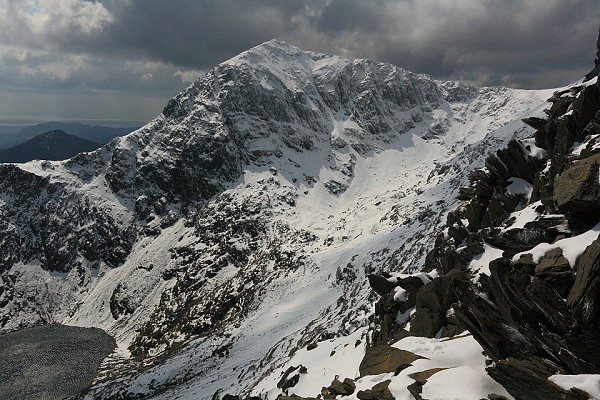
A long-running survey shows that Snowdon's climate has warmed slightly over the last 15 years. But it's not all bad news, since there's a healthier mix of vegetation than in previous decades thanks to better land management.
The Welsh winter is a pretty rare occurrence already, and global warming fuels speculation that Snowdonia's mountains may one day be permanently snowless. After a couple of great winter climbing and walking seasons in recent years, this winter has been one of the mildest on record. According to the UK-wide Environmental Change Network (ECN) survey, that's part of a trend.
ECN looks beyond annual swings to the bigger picture, and over the last 15 years of monitoring the data suggests the climate has changed slightly on Snowdon. Spring and summer temperatures have risen, and winters have become wetter and warmer. More butterflies than ever have been recorded here due to the warming trend, and apparently these are well known indicators of environmental change. Across the ECN network as a whole a significant warming trend of 0.9°C was recorded between 1992 and 2007, with upland sites showing a greater increase (1.2°C) than lowland sites (0.7°C). Since then the warming trend on Snowdon has been disrupted as a result of the recent cold winters, though the long term direction is still clear.
Dylan Lloyd, the Countryside Council for Wales' Environmental Surveillance Officer and one of the report's authors said:
'As our monitoring work progresses, Snowdon ECN will continue to track changes in the climate, in airborne pollution and land management, revealing valuable information about the impact of changes on Snowdon's natural habitats.'
'Being part of a broader network of ECN sites across the UK strengthens our findings. We can differentiate short-term variation from long-term patterns of change, making ECN sites invaluable to investigate the health of the ecosystems we all rely on.'
The Environmental Change Network (ECN) is a UK-wide monitoring network dedicated to investigating how our environment changes over time. There are 12 terrestrial sites in the network, with Snowdon the only one in Wales. The other terrestrial sites of particular interest to hillwalkers are in the North Pennines and the Cairngorms. The ECN site on Snowdon is at 500 metres. A large amount of data is collected each week here, as well as data collected continuously from an automatic weather station. At each ECN site, different components of the ecosystem are recorded to give an insight into the health of the ecosystems, and the impacts of environmental change, including climate change, on them. The breadth and detail of recording carried out at ECN sites means they are among a very small number of long-term monitoring sites that can provide comprehensive information on environmental change.
The Snowdon report also highlights how changing land use over the last decade, including a large fall in the number of grazing sheep, has led to a more diverse mix of plant life on the mountain. There's more rainfall overall too, but less of it is now acid thanks to the UK's drive to decrease sulphur dioxide pollution. Other atmospheric pollutants still affect the upland environment however. It's a mixed bag, then.
See the full report here.











Comments